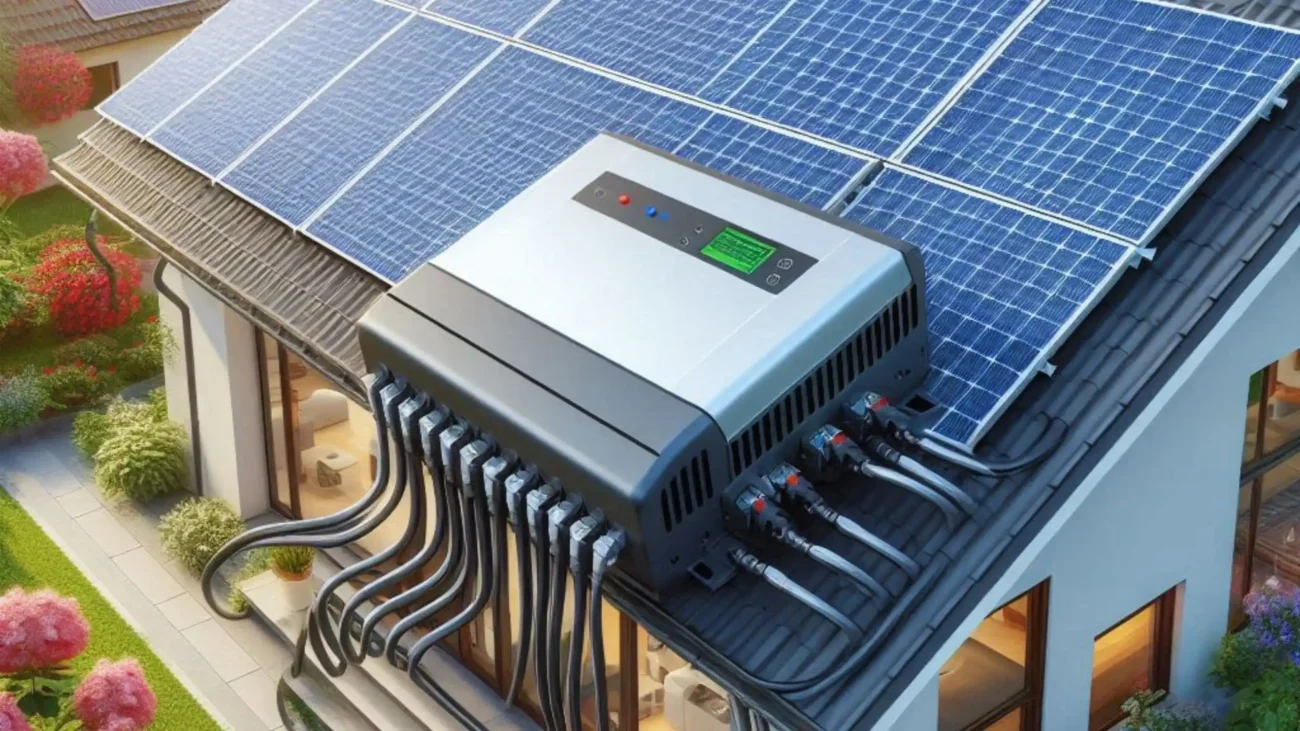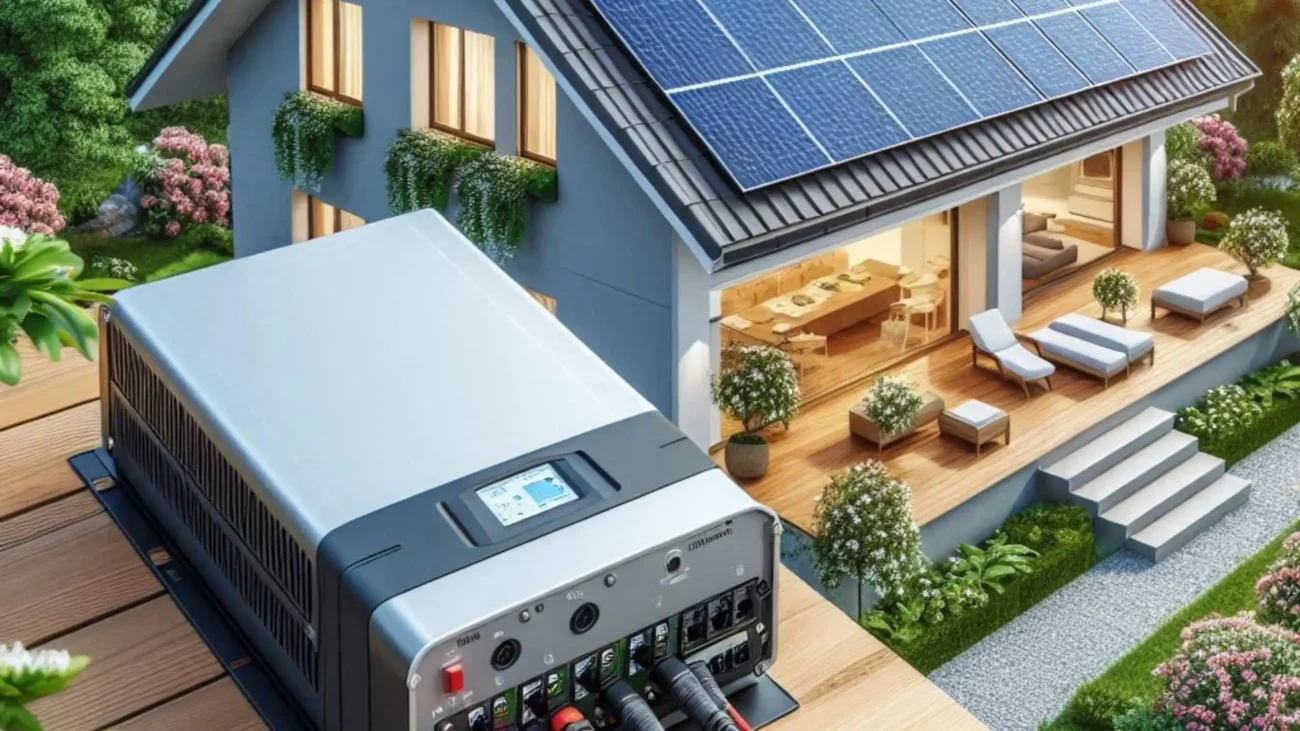As the world moves towards sustainable energy solutions, solar power stands out as a leading option. At the heart of every solar power system is the solar inverter, a critical component that converts the direct current (DC) produced by solar panels into alternating current (AC), which is used by most household appliances. Choosing the right solar inverter is essential for optimizing the efficiency and performance of your solar power system. This article provides a comprehensive guide on the different types of solar inverters and identifies the best options based on various factors.
In This Post
Types of Solar Inverters
1. String Inverters
String inverters, also known as central inverters, are the most commonly used type of solar inverters. They connect multiple solar panels (strings) to a single inverter, which then converts the DC electricity into AC. Here are some key features:
- Cost-Effective: String inverters are generally the most economical option, making them a popular choice for residential and commercial installations.
- Easy Maintenance: With only one central inverter to monitor and maintain, string inverters simplify maintenance.
- Limited Flexibility: The performance of the entire system can be affected if one panel in the string is shaded or malfunctions.
2. Microinverters
Microinverters are small inverters installed at each solar panel. Unlike string inverters, they convert DC to AC at the panel level. This configuration offers several advantages:
- Maximized Energy Production: Each panel operates independently, ensuring that shading or a fault in one panel does not affect the others.
- Enhanced Monitoring: Microinverters allow for detailed monitoring of each panel’s performance, enabling precise troubleshooting.
- Higher Cost: The initial investment for microinverters is typically higher than for string inverters, though the cost is offset by increased energy production.

3. Power Optimizers
Power optimizers are a hybrid solution that combines elements of both string inverters and microinverters. They are installed at each panel, optimizing the DC output before sending it to a central string inverter. Key benefits include:
- Improved Efficiency: By optimizing the output of each panel, power optimizers can increase the overall system efficiency.
- Cost-Effective: While more expensive than traditional string inverters, power optimizers are generally less costly than microinverters.
- Enhanced Monitoring: Like microinverters, power optimizers offer detailed panel-level monitoring.
4. Hybrid Inverters
Hybrid inverters, also known as multi-mode inverters, can manage power from both solar panels and batteries. They are ideal for systems that incorporate energy storage. Features include:
- Versatility: Hybrid inverters can handle multiple energy sources, making them suitable for advanced solar power systems.
- Energy Storage Integration: They facilitate seamless integration with battery storage, allowing for energy independence and off-grid capabilities.
- Higher Cost: Hybrid inverters are typically more expensive due to their advanced functionality.

Factors to Consider When Choosing a Solar Inverter
1. System Size and Configuration
The size of your solar power system and its configuration play a significant role in determining the type of inverter you need. For smaller, residential systems, microinverters or power optimizers might be more suitable due to their flexibility and efficiency. For larger, commercial systems, string inverters are often preferred for their cost-effectiveness and scalability.
2. Budget
Your budget will also influence your choice. While microinverters and hybrid inverters offer superior performance and features, they come at a higher cost. String inverters and power optimizers offer a balance between cost and efficiency.
3. Shading and Roof Orientation
If your solar panels guides are likely to experience shading or if they are installed on roofs with multiple orientations, microinverters or power optimizers are ideal. These inverters ensure that each panel operates independently, minimizing the impact of shading on overall system performance.
4. Monitoring and Maintenance
Consider how much monitoring and maintenance you are willing to perform. Microinverters and power optimizers provide detailed, panel-level monitoring, making it easier to identify and address issues. String inverters, while easier to maintain, offer less granular monitoring.
5. Future Expansion
If you plan to expand your solar power system in the future, consider the scalability of the inverter. Hybrid inverters, for example, allow for the integration of additional energy sources and storage solutions.

Top Solar Inverter Brands
1. SolarEdge
SolarEdge is renowned for its power optimizers and innovative string inverter solutions. Their systems are known for high efficiency, advanced monitoring capabilities, and robust performance. SolarEdge is a top choice for both residential and commercial installations.
2. Enphase Energy
Enphase Energy specializes in microinverters, providing reliable and high-performance solutions. Their microinverters are easy to install and offer detailed monitoring, making them a preferred option for residential systems with shading issues or complex roof configurations.
3. SMA Solar Technology
SMA is a global leader in solar inverter technology, offering a wide range of inverters, including string and hybrid inverters. Their products are known for durability, efficiency, and comprehensive monitoring features.
4. Fronius
Fronius offers a variety of solar inverters, including string and hybrid inverters. They are praised for their high efficiency, user-friendly interfaces, and reliable performance. Fronius inverters are suitable for both residential and commercial applications.
5. ABB (now FIMER)
ABB, now operating under the FIMER brand, provides a broad range of inverters, including string and hybrid models. Their inverters are known for their robustness, efficiency, and advanced grid management capabilities.
Conclusion
Selecting the best solar inverter for your system involves evaluating several factors, including system size, budget, shading, monitoring needs, and future expansion plans. While string inverters are cost-effective and suitable for larger installations, microinverters and power optimizers offer superior performance and flexibility for systems with shading or complex configurations. Hybrid inverters provide the versatility needed for integrating battery storage and achieving energy independence.
To ensure you choose the best inverter for your specific needs, consider consulting with a solar energy professional who can provide personalized recommendations based on your unique circumstances.

FAQs
What is the main function of a solar inverter?
A solar inverter converts the direct current (DC) generated by solar panels into alternating current (AC), which is the form of electricity used by household appliances and the electrical grid. This conversion is essential for utilizing solar energy effectively in homes and businesses.
How do string inverters differ from microinverters?
String inverters connect multiple solar panels in a series (string) and convert their combined DC output to AC centrally, making them cost-effective but susceptible to shading issues. Microinverters are installed on each panel, converting DC to AC individually, optimizing performance and allowing independent operation and detailed monitoring of each panel.
Are microinverters worth the extra cost?
Microinverters are worth the extra cost if your solar system faces shading issues or has a complex roof layout. They maximize energy production by allowing each panel to operate independently, offer detailed performance monitoring, and simplify troubleshooting, making them ideal for optimizing efficiency and reliability.
What are the advantages of using power optimizers?
Power optimizers increase solar system efficiency by optimizing the output of each panel. They offer detailed, panel-level monitoring, enabling precise troubleshooting and maintenance. Additionally, power optimizers mitigate the impact of shading and panel mismatches, enhancing overall system performance and reliability.
Can I add a battery storage system to my existing solar power system?
Yes, you can add a battery storage system to your existing solar power system. This integration allows you to store excess solar energy for use during non-sunny periods or power outages, enhancing energy independence and efficiency. Using a hybrid inverter simplifies this process, but even systems with traditional inverters can be retrofitted with battery storage.
How do I decide which type of solar inverter is best for my needs?
Decide on the best solar inverter by considering your system size, budget, shading issues, roof orientation, monitoring needs, and future expansion plans. String inverters are cost-effective for large systems, microinverters suit shaded or complex roofs, and hybrid inverters are ideal for integrating battery storage. Consulting with a solar professional can help tailor the choice to your needs.
How long do solar inverters typically last?
Solar inverters typically last 10 to 15 years, though some high-quality models can last up to 20 years. Regular maintenance and monitoring can help extend their lifespan, ensuring optimal performance and efficiency of your solar power system over time.
Is it possible to replace an inverter without replacing the entire solar system?
Yes, it is possible to replace an inverter without replacing the entire solar system. Inverter replacement is a common procedure when the inverter fails or becomes outdated. This allows for upgrades or repairs without the need for a complete system overhaul, ensuring continued efficiency and performance.
What are hybrid inverters and when should I consider them?
Hybrid inverters, or multi-mode inverters, manage power from both solar panels and batteries. They are ideal for systems that include energy storage, offering versatility and energy independence. Consider hybrid inverters if you want to integrate battery storage with your solar power system to use stored energy during non-sunny periods or power outages, ensuring uninterrupted electricity supply.
What are some leading brands of solar inverters?
Some leading brands of solar inverters include SolarEdge, Enphase Energy, SMA Solar Technology, Fronius, and ABB (now FIMER). These brands are recognized for their reliability, efficiency, and advanced features, making them popular choices for residential and commercial solar power installations worldwide.
